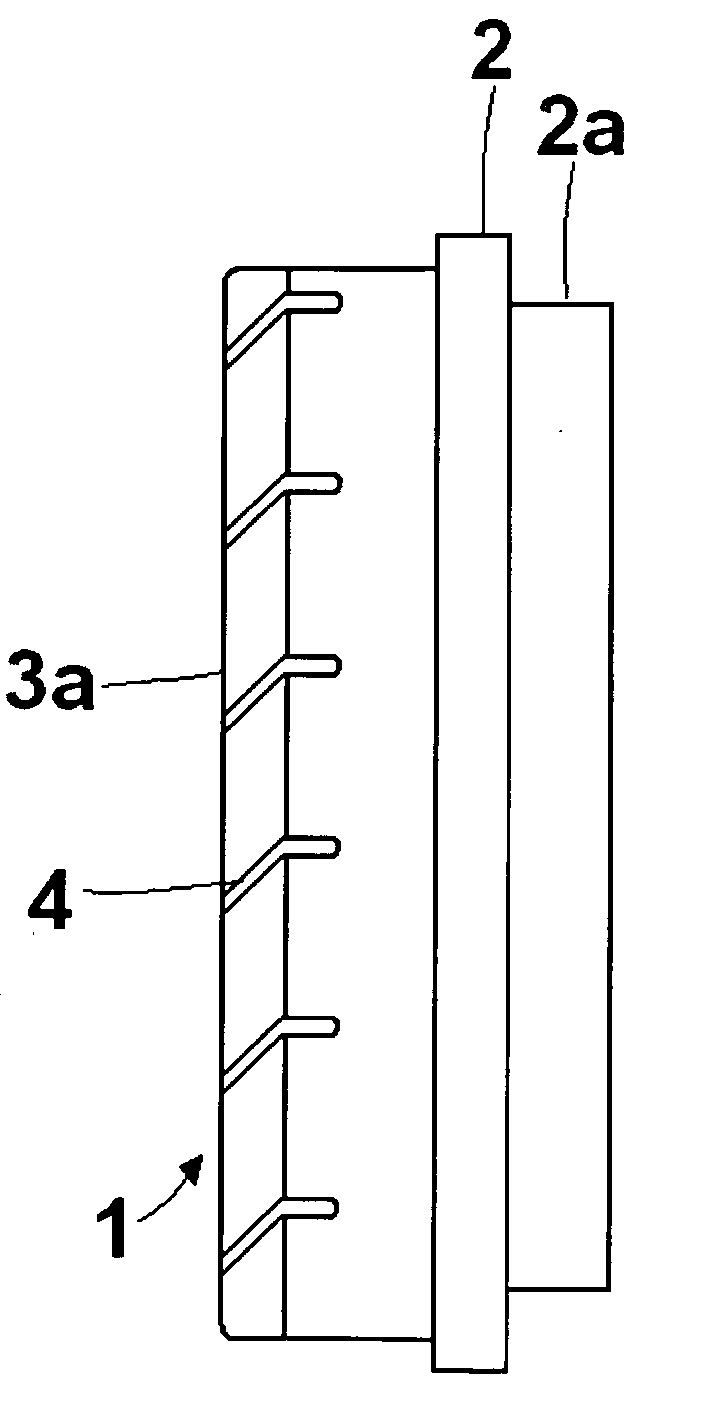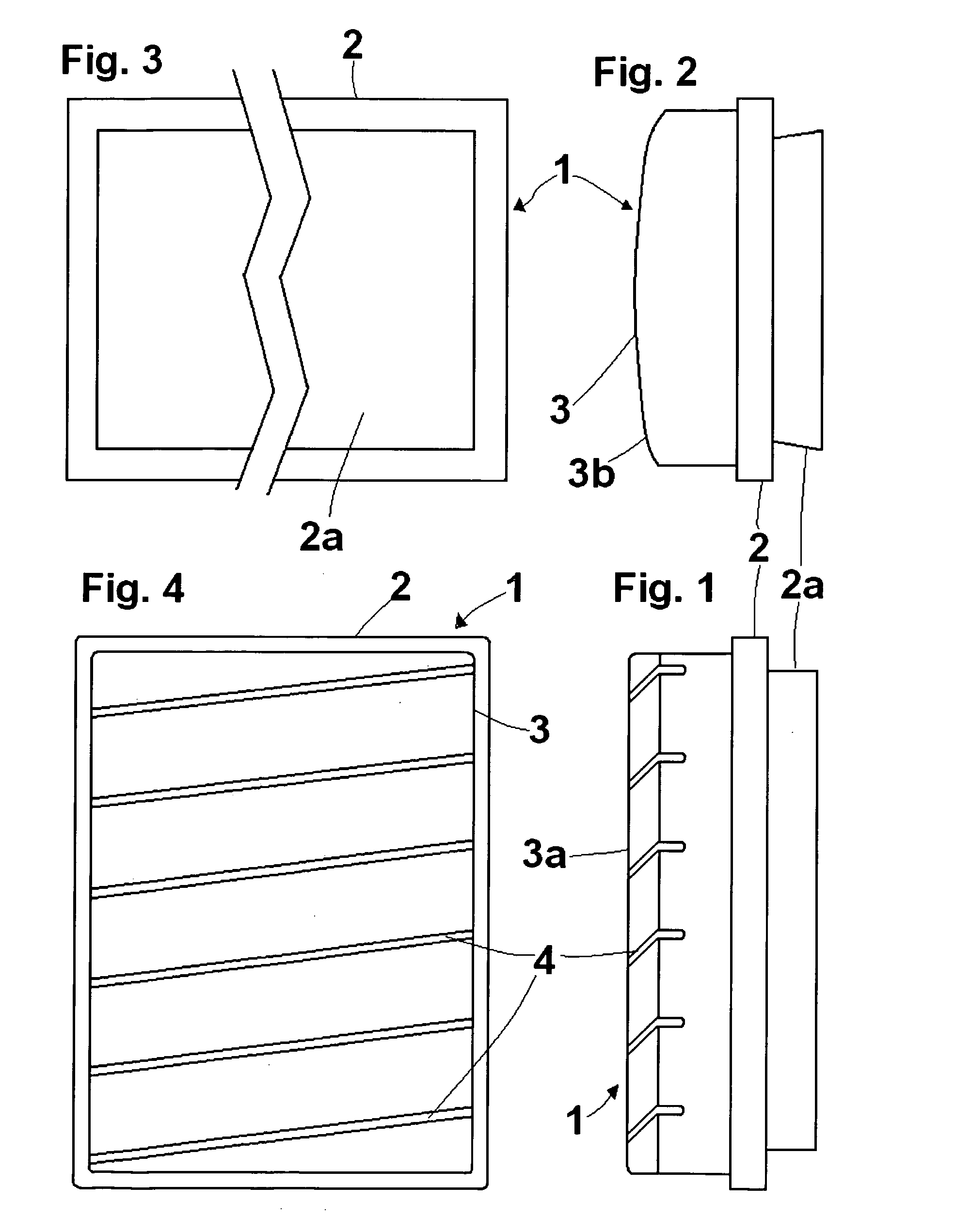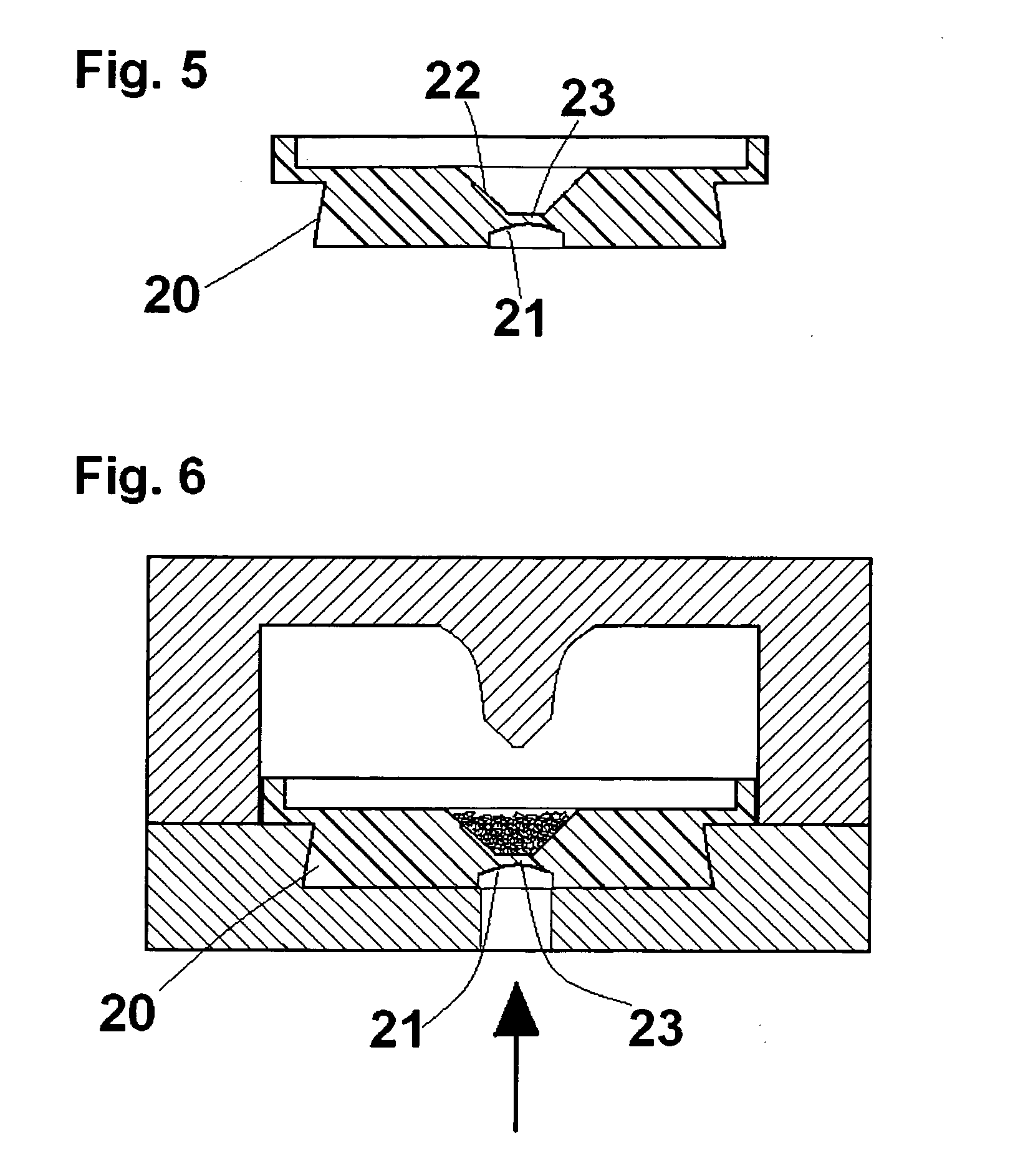Block tool for surface finishing operations and method of obtaining the same
a technology of surface finishing and block tool, which is applied in the direction of drawing profiling tool, turning machine accessories, gear-teeth manufacturing apparatus, etc., can solve the problems of high cost, difficult to obtain uniform heat propagation towards the tool core, and relative high tendency to undergo abrasion, etc., to achieve high removal effectiveness and high impact strength
- Summary
- Abstract
- Description
- Claims
- Application Information
AI Technical Summary
Benefits of technology
Problems solved by technology
Method used
Image
Examples
example 1
[0048] A block tool according to the present invention was prepared, which had a support member made of nylon filled with 20% of glass fibers, onto which a solution of thermoplastic resin commercially available under the tradename Nevamide 209 G 30 produced by the company Nevicolor S.p.A. at Luzzara (Reggio Emilia—Italy) was injection loaded into a suitable mold with the addition of granules of 80 / 100 mesh industrial diamond in a percentage of 7% with respect to resin.
[0049] The resin was allowed spontaneously to solidify in the mold for 180 seconds, the mold was then open and a finished block tool was extracted which was provided with an attachment head similar to that of conventional blocks with a very good distribution of the abrasive material in the resin (matrix).
example 2
[0050] A block tool according to the present invention was prepared, which had a support member made of nylon filled with 20% glass fibers, onto which a solution of thermoplastic resin commercially available under the tradename Krasten (thermoplastic polyester) and produced by the company Nevicolor S.p.A. at Luzzara (Reggio Emilia—Italy) was injected. The abrasive material comprising granules of 80 / 100 mesh industrial diamond was mixed with the thermoplastic resin at 7:93 ratio and the mixture was injection loaded into a mold having a plurality of cavities. Solidification took place in 180 seconds. Once solidification was terminated, six block tools was removed from the mold, which were ready for use and had a very good distribution of the abrasive granules in the matrix.
example 3
[0051] A block tool according to the present invention was prepared, which had a support made of nylon with 20% glass fibers, onto which a solution comprising a thermoplastic acetal resin with 5% (60 g) silicon carbide, 2% 75-150 microns tungsten carbide, and 3% 80 / 100 mesh industrial diamond dispersed therein was injection loaded in a mold.
[0052] After solidification of the resin, a block tool was obtained ready to be used and with a very good distribution of abrasive material in it.
[0053] Preferably block tools according to the present invention have a support member made of nylon with 10-30% glass fibers dispersed therein.
[0054] The above-described tests were repeated in a similar way in view of preparing abrasive blocks with no support member for attachment to a tool machine. Such blocks can be secured to a respective supporting member either before or after removal from the mold by means of suitable retaining means, e.g. a suitable gluing means or a Velcro system.
[0055] Tri...
PUM
| Property | Measurement | Unit |
|---|---|---|
| temperature | aaaaa | aaaaa |
| melting point | aaaaa | aaaaa |
| distortion temperature TG | aaaaa | aaaaa |
Abstract
Description
Claims
Application Information
 Login to View More
Login to View More - R&D
- Intellectual Property
- Life Sciences
- Materials
- Tech Scout
- Unparalleled Data Quality
- Higher Quality Content
- 60% Fewer Hallucinations
Browse by: Latest US Patents, China's latest patents, Technical Efficacy Thesaurus, Application Domain, Technology Topic, Popular Technical Reports.
© 2025 PatSnap. All rights reserved.Legal|Privacy policy|Modern Slavery Act Transparency Statement|Sitemap|About US| Contact US: help@patsnap.com



